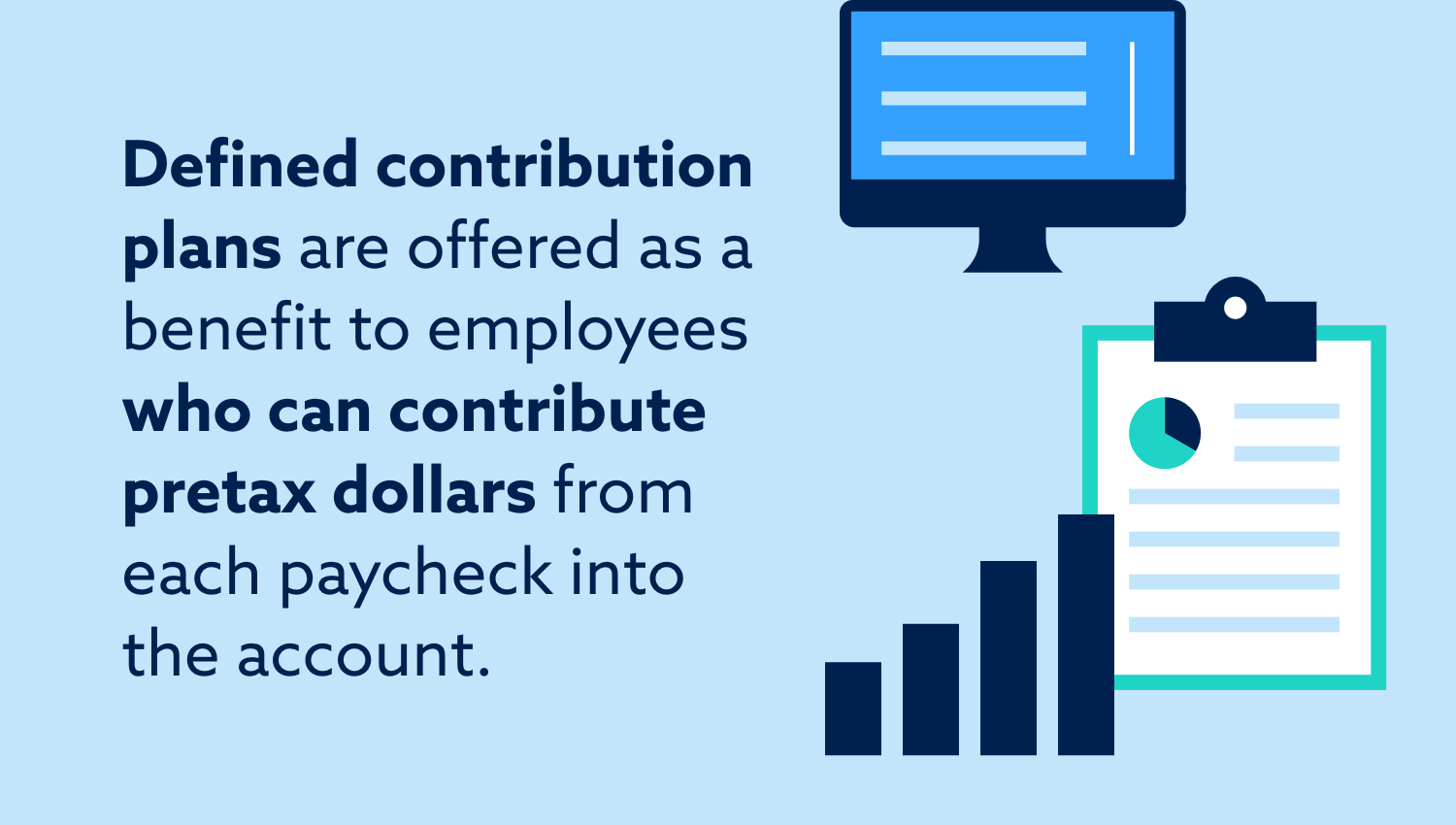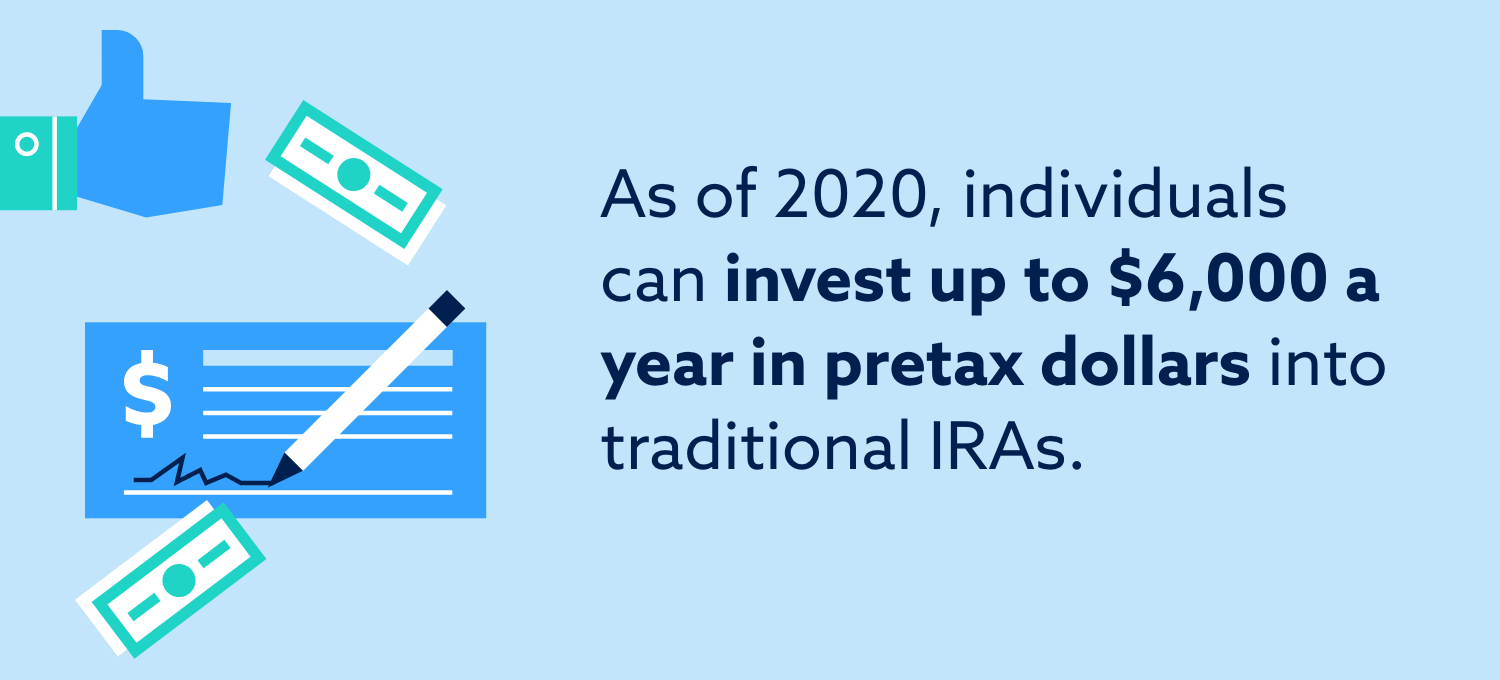
Note: If you are considering retirement or beginning your financial planning for retirement, please talk to a financial adviser for information fitting your particular circumstances and needs.
According to a 2019 study from Northwestern Mutual, around 1 in 5 Americans have $5,000 or less in retirement savings, and close to half believe they’ll outlive their savings. Even so, only around 45% say they’ve acted to solve this issue.
One reason many people may avoid planning for retirement is that the sheer number of retirement plans and options can be daunting.
Differentiating Between Retirement Plans
There are a variety of retirement plans available, each with their own benefits and potential drawbacks. You might consider working with a financial advisor to get started. Whether retirement is close at hand or decades away, take some time to create a retirement savings plan to support your future goals.
Defined Contribution Plans
Defined contribution plans are employer- or organization-sponsored. That means they’re offered as a benefit to employees who can contribute pretax dollars from each paycheck into the account. Employers may match those contributions up to a certain amount, which can lead to greater savings.

401(k)
401(k) plans are defined contribution plans offered by employers in the private sector. The IRS limits how much can be contributed to 401(k) plans each year. As of 2020, the maximum amount is $19,500 for most people.
Money in a 401(k) may be available for use through a 401(k) loan prior to retirement. Ordinarily, individuals who take money out of their 401(k) early would pay a 10% tax penalty. With the passage of the CARES Act, however, penalty fees on 401(k) retirement accounts and other employee-sponsored accounts and personal retirement accounts have been changed.
403(b)
A 403(b) plan is similar to a 401(k), but it’s for employees in the public sector and those working for tax-exempt organizations, such as teachers or clergy members. Annual contribution limits for 403(b) are also $19,500 as of 2020.
457(b)
A 457(b) plan is also similar to a 401(k), but it’s for people who work for local and state governments, such as police officers. The annual contribution limit for 457(b) plans is also $19,500 as of 2020 for most people.
IRA Plans
While 401(k) plans are commonly known, they’re not the only option for saving for retirement. IRA plans are individual retirement plans. These are plans that individuals can contribute pretax dollars to, but employers are not involved and there isn’t a match.
Traditional
As of 2020, individuals can invest up to $6,000 a year in pretax dollars into this retirement account. Those over the age of 50 can make an extra $1,000 in annual contributions for the purpose of catching up on retirement savings.
Taxes aren’t paid on IRA funds until they’re withdrawn as income during retirement. Individuals must begin taking minimum required deductions from IRA funds at age 70.5 if they were born before July 1, 1949, and at age 72 if they were born after June 30, 1949. Taking withdrawals before retirement age can result in penalties.

Roth IRA
Roth IRAs are similar to traditional IRAs and come with the same contribution limits. However, contributions are not pretax, and there are no taxes on withdrawals made in retirement. Roth IRAs also don’t come with minimum required deductions in retirement, which can allow people to hang on to investments longer.
SIMPLE IRA
SIMPLE stands for Savings Incentive Match Plan for Employers. These plans combine some features of 401(k) and IRA plans to create an option for very small businesses or self-employed individuals.
Contribution limits are $13,500 annually as of 2020, with catch-up contributions capped at $3,000 each year. Employers are typically required to make at least a small match of up to 3%. SIMPLE IRAs do come with a hefty tax penalty of up to 25% if someone makes a withdrawal within two years of setting up the plan.
SEP
SEP stands for Simplified Employee Pension. It’s an IRA that’s set up and funded by an employer. Employers can contribute up to 25% of an employee’s compensation or $57,000 max annually.
Spousal IRA
To contribute to an IRA, someone must earn an income. But the IRS provides a provision for spouses who don’t work via a spousal IRA. If one spouse is drawing an income and the couple files federal returns as married, filing jointly, the other spouse can have their own IRA. All the standard rules for the IRA type—whether traditional or Roth—apply.
Rollover IRA
A rollover IRA is simply a traditional or Roth IRA that receives the funds from an employer-sponsored plan in a rollover. It allows individuals to move funds from a 401(k) or another sponsored plan into a different investment vehicle should the person leave employment or otherwise want to migrate their funds. Typically, once you open a rollover IRA, the rules for the IRA type take over as far as contributions and withdrawals are concerned.
Defined Benefit Plans
A defined benefit plan is typically a pension plan. It’s employer-sponsored, and the company manages any investments related to it. The company makes a promise to provide pension payments to retirees after their employment service is over. Pension payment amounts and lengths can be based on a variety of factors, including length of work service, level of service and salary history.
Cash-Balance Plans
Cash-balance plans offer an option for lifetime benefits once retired. During employment years, the employer adds a certain amount each year to a fund, which is typically calculated as a percentage of someone’s salary. The company manages the investment and any profits or losses.
Upon retirement, the former employee receives a pension benefit as agreed upon under the plan. Participants can typically take an annuity option, which pays benefits out over time, or a lump sum that can be reinvested in an IRA.
Pension Plans
Pension plans can work somewhat like 401(k) plans, with both an employer and an employee making contributions. However, the employee does not have any risk in the investment. They are guaranteed a pension payout according to their benefits contract regardless of whether the investment gains or loses. The risk to the employee is that the company’s portfolio might perform so badly that all pensions must be diminished or that the company files for bankruptcy.
Money Purchase Plans
A money purchase plan is a pension plan that allows the employee to make investment choices based on options set up by the employer. Only employers contribute to the plan.
Guaranteed Income Annuities
Annuities are similar to insurance in how you buy and pay for them. You pay a premium for a set period of time. Your premium payments are invested by the insurance company.
When you reach retirement, you receive a guaranteed annual income according to your annuity plan. Annuity payments can be made monthly, quarterly or annually, and with a lifetime annuity, they continue throughout your retirement.
Cash Value Life Insurance Plan
A cash value life insurance plan is a type of life insurance that builds cash value over time as you pay premiums. Once you meet all your premium obligations—which might require you to pay premiums for a long period of time, such as 20 years—you are guaranteed the life insurance coverage for the rest of your life. You can also draw on any cash value that the plan has accrued to pay for retirement expenses or other needs.
Nonqualified Deferred Compensation Plans
Nonqualified deferred compensation plans let employees earn compensation but not receive it—or pay taxes on it—in the year that the service was provided. Instead, they elect to receive the compensation at a later time and can delay it even until retirement.
Retirement Resources
The sheer number of retirement plans can make it confusing to choose one, and that doesn’t even account for questions such as how much you need for retirement or when you can retire. Educating yourself about your retirement is the first step in protecting it.
Start your retirement planning with some resources, such as AARP’s retirement calculator. It helps you understand how much more you need to save and when you can potentially reach that goal.
The government also provides a basic primer for money management and retirement, which can be a good starting point. Talking to a financial advisor, a CPA or an attorney who normally handles retirement planning can also be a good idea.
